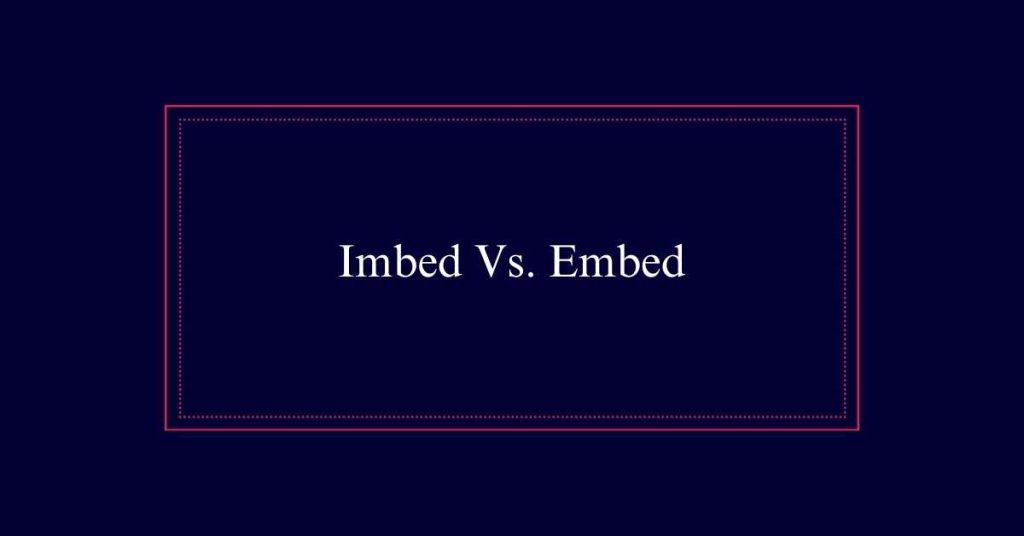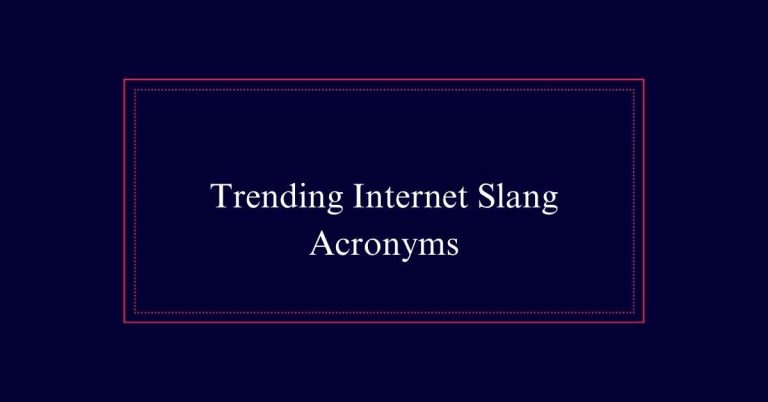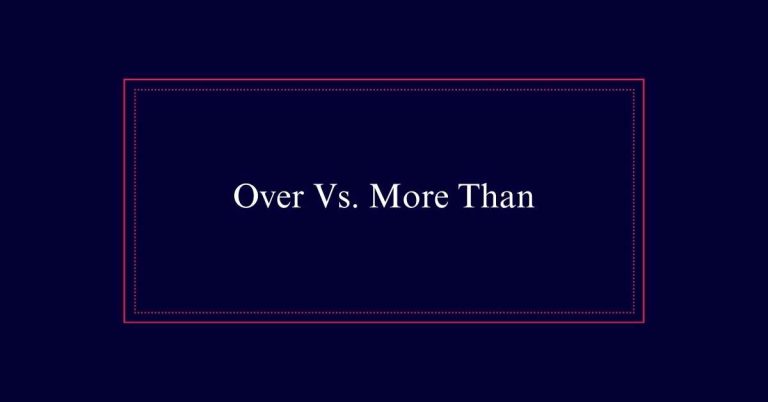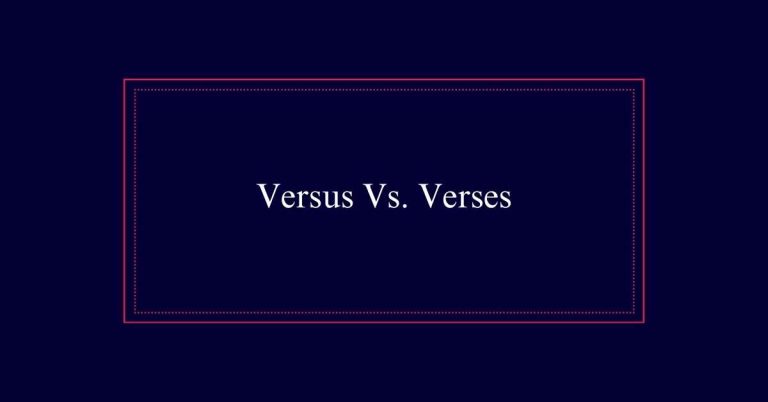Imbed Vs. Embed
The terms ‘imbed’ and ’embed’ both mean to place something firmly within a surrounding context. Historically, they have been used interchangeably. However, contemporary usage strongly prefers ’embed’ over the more archaic ‘imbed.’ This preference is seen in digital, academic, and professional settings.
Both spellings are pronounced the same way, with stress on the second syllable. The slight variation in spelling does not change their meaning. Many style guides recommend using ’embed’ for clarity.
Understanding Imbed and Embed
The terms ‘imbed’ and ’embed’ refer to the same concept, differing only in their spelling. Both words are verbs that mean to firmly place something within a surrounding mass. They can also signify making something an integral part of a larger whole. For example, one might embed a gemstone in a piece of jewelry or imbed a cultural reference in a conversation.
Despite the spelling variation, both terms convey the same idea. Historically, both spellings have been used interchangeably in literature and everyday language. However, contemporary usage has favored ’embed’ over ‘imbed’.
Common Usage Today
In modern writing, ’embed’ has become the preferred spelling over ‘imbed’. This shift reflects a broader trend in contemporary English usage. ‘Embed’ is more commonly found in digital, academic, and professional contexts. Many style guides and dictionaries now recommend ’embed’ as the standard choice.
The prevalence of ’embed’ can be attributed to its widespread adoption in technology and media. For example, terms like ’embedded video’ or ’embedded systems’ have solidified its usage. While ‘imbed’ remains an acceptable alternative, it is less frequently used and may appear archaic.
Pronunciation Guide
Pronunciation of ’embed’ and ‘imbed’ follows a straightforward pattern, with both pronounced as em-BED or im-BED. The pronunciation is simple and does not vary between the two spellings. The stress is placed on the second syllable, making the ‘BED’ part sound more pronounced.

This consistency in pronunciation helps guarantee that whether you use ’embed’ or ‘imbed’, your verbal communication remains clear. It is vital to uphold this correct stress pattern to avoid mispronunciation.
Definition and Meaning
To define ’embed’ or ‘imbed’, consider it as placing something securely within a surrounding substance or context. Both terms mean inserting an object firmly into another material. This can also extend to ideas or concepts being integrated into a broader framework. The terms are interchangeable, though ’embed’ is more commonly used today. The origin of the words shows no difference in meaning, just a variation in spelling.
Here is a quick comparison:
| Aspect | Description |
|---|---|
| Meaning | To place securely within something |
| Usage | Both are correct, ’embed’ is common |
| Pronunciation | em-BED or im-BED |
| Contextual Use | Physical, conceptual integration |
| Spelling Trend | ‘Embed’ is the prevalent choice |
Usage Examples
Embedding examples in a discussion can illuminate the practical application of a word. Consider the following scenarios in which ’embed’ and ‘imbed’ are used interchangeably:
Education:
‘Teachers embed critical thinking exercises within the curriculum to foster analysis skills.’
Technology:
‘Developers often imbed code snippets into web pages to enhance functionality.’
Art and Craft:
‘Artisans imbed delicate patterns into ceramics, creating intricate designs.’
These examples highlight how the terms can be seamlessly integrated into various contexts, showcasing their versatility.
Historical Spelling Variations
Historical spelling variations of words often reflect the evolution of language over time. The words ‘imbed’ and ’embed’ are perfect examples. Both spellings have been used interchangeably in English literature and writing, although ’embed’ has become more dominant in recent years.
This shift can be attributed to changes in spelling conventions and the influence of standardization in education and publishing. Historically, variations like these were more common due to regional differences and less formalized spelling rules.
As language evolves, certain spellings become standardized, often reflecting broader cultural or technological changes.
Literature Examples
Many literary works demonstrate the use of both ‘imbed’ and ’embed’ in various contexts. These terms appear in a variety of texts, showcasing their versatility and historical usage.
For instance:
- Classic Literature: Authors like Charles Dickens have used ‘imbed’ in their narratives, grounding the word in historical context.
- Scientific Journals: Early 20th-century scientific papers often used ’embed’ to describe the incorporation of data or elements within a study.
- Modern Novels: Contemporary authors prefer ’embed,’ aligning with current linguistic trends.
Shift Towards Embed
The shift towards using ’embed’ over ‘imbed’ reflects modern linguistic preferences. This change aligns with a broader trend in English where simpler and more unified spellings gain favor.
As digital communication expands, consistency in word usage becomes essential. ‘Embed’ has emerged as the preferred spelling, likely due to its more frequent usage in technology and media contexts.
Search engines and digital platforms often standardize spellings to streamline information retrieval. Consequently, ’embed’ appears more frequently in search results and online content. This prevalence reinforces its acceptance and usage.






